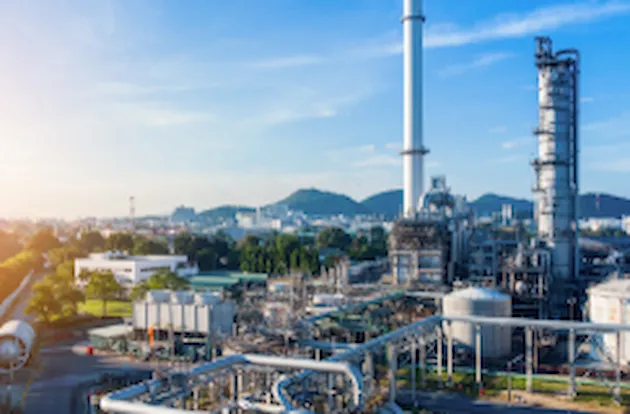

Major hazard installations such as gas terminals and refineries will typically have several buildings located within their boundaries. Often this is to support workers being located close to the hazards that they are managing without exposing them to undue risk. As such, it is important that operators recognise their responsibility and ensure these buildings – normally referred to as ‘occupied buildings’ – are designed considering the hazards within their vicinity. These buildings should provide the necessary protection to their occupants should an accident occur. On the other hand, it is important to note that if the building did not exist, the case for their workers being located on the facility – typically for up to 12 hours at a time – may not have been supported from a risk tolerability perspective.
An occupied buildings risk assessment (OBRA) is a natural input in the process of specifying buildings and demonstrating that risks to workers are as low as reasonably practicable (ALARP).
Our Safeti™ software for consequence and risk modelling of loss of containment events is tailored for safety professionals responsible for performing OBRA.
Define occupant vulnerability based on a building's design
The Safeti software supports multiple building types*, enabling users to determine risks for existing buildings or perform sensitivities for a range of building designs in your project.
Support for TNO multi-energy and BST explosion methods
The Safeti software supports the popular TNO multi-energy (ME) and Baker-Strehlow-Tang (BST) explosions methods, as well as import of your own explosion modelling data for use in risk calculations.
Comply with industry guidance
Whether you’re adopting a consequence-based or a risk-based approach, our Safeti software allows you to comply the industry guidance such as:
- API 752: Management of Hazards Associated with Location of Process Plant Permanent Buildings
- API 753: Management of Hazards Associated with Location of Process Plant Portable Buildings
- Chemical Industries Association: Guidance for the location and design of occupied buildings on chemical manufacturing sites (“CIA guidance”)
With outputs such as location-specific individual risk (LSIR) contours, potential loss of life (PLL), individual risk (IR) at specific locations, frequency contours for given effects*, and exceedance curves*, the Safeti software gives you the metrics you need to meet your obligations.
Locate or specify your buildings
Whether it is to decide on a location for a new building, specify its required blast resistance or review the risks of an existing building, the Safeti software makes this easy.
Thermal radiation and overpressure exceedance curves, frequency contours and risk contours allow you to plan ahead and make the right decisions.
*Safeti Explosions add-on required. Click here for more details.
Explore our software solution:

Safeti
Make cost-effective decisions and manage risk throughout the asset lifecycle.
Discover other applications of our software:
Hydrogen consequence and risk modelling
Guidance on modelling hydrogen releases using Phast and Safeti software.
CO2 consequence and risk modelling
Guidance on modelling carbon dioxide (CO2) releases using using Phast and Safeti software.
Consequence estimation
Perform comprehensive consequence analysis and visualization for safety studies such as HAZOP, HAZID, PHA, and LOPA using the Phast software.
Accident & incident investigation
Assess hazardous material releases, identify root causes, and develop preventive measures using the Phast software.
Regulatory compliance
Evaluate and manage consequence and risks associated with hazardous materials and operations for regulatory compliance using the Phast and Safeti software.
Emergency response
Simulate consequences from loss of containment scenarios to aid in the development of effective emergency response plans using the Phast software.
|
Facility siting is the process of determining the placement of occupied buildings, whether temporary or permanent, within a process facility.This involves evaluating the potential hazards and risks associated with the operations and ensuring that the occupied buildings are located at a safe distance from potential sources of harm, to minimize risks to the occupants of the buildings and ensure their safety in the event of an emergency. This process typically involves conducting a detailed risk analysis, in compliance with regulatory requirements, and implementing appropriate safety measures. |
|
Risk assessment is the process of identifying, analyzing, and evaluating risks associated with hazards that could affect an organization, project or activity. It involves determining the likelihood of an event occurring and the potential consequences of that event, with the aim of implementing appropriate measures to manage or mitigate the identified risks. |
|
Occupied buildings risk assessment (OBRA) is used to assess risks to people in buildings from major accidents to determine the appropriate safety measures to be implemented. |
|
Safeti is a software developed by DNV that helps users evaluate the risks associated with major accident hazards (MAHs) to both people and assets by modelling potential accident scenarios, including their frequency, consequences, and the overall risk they pose. Additionally, Safeti enables the completion of comprehensive Quantitative Risk Assessment (QRA) studies. |